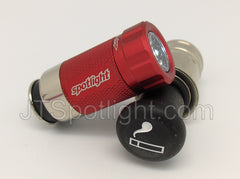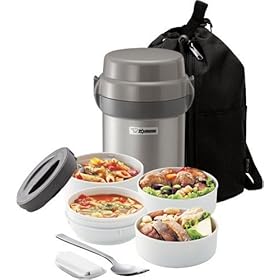More than a few commenters had questions about the Gbridge tool for Windows we featured last week, which works on top of your Google account to provide file sharing and remote desktop capabilities. Why does it bother using Google accounts? Is it any better or different than LogMeIn or Techinline? Is it secure? We spent some time checking out Gbridge, and came away impressed with its ease of use and nifty features, along with a few answers to your questions and screenshots.
First off, Gbridge uses your Google account username and password in large part to save you and any friends you connect to the trouble of having to create new accounts (and remember new passwords) at Gbridge. It also uses the Google Talk service's authentication, and claims to encrypt all network traffic it passes through GTalk's servers. Furthermore, the app makers state in their FAQ that everything gets encrypted and authenticated between Gbridge clients. That may not be enough assurance for IT managers or anyone backing up super-private files, but if you're still interested, let's check out what Gbridge can do.
Setting up Gbridge and file sharing
After heading to Gbridge's web site and downloading the Windows client, installing is relatively straightforward. All users will see a black-and-white command prompt pop up, which is normal. Vista users, however, may see this dire warning, but Gbridge informs you to let it slide and hit "Allow":

Once you move past the technicals, you'll be asked for your Gmail/Google account information, and to give a host name (of less than 8 characters).

When everything's set up, you're ready to get rolling, but you might want to set up Gbridge on any other computers you own to create a virtual network amongst your boxes. That's right—you can install and auto-start Gbridge on multiple computers, using the same Gmail logon, and it will keep all those computers connected and ready to trade or stream files. In the example below, I used my Gmail account to hook my Vista laptop up to my wife's laptop. Each has a different host name, but they're otherwise linked together.

The easiest way to use Gbridge is to create "SecureShares." Hit the big button for SecureShares at the top on the Gbridge client that's doing the sharing, choose a folder, and choose the people who can access it and set a password. You can allow only your other boxes to grab files, or invite friends also using Gbridge to check out you wares. Those files are shared through a browser link that only works for Gbridge-connected systems. On the sharing page, documents and files are offered up for right-click grabbing, but pictures and music files are available for instant viewing or playing. Streaming my wife's MP3 collection yielded super-snappy playback, and the album cover organization is a slick touch:

Using Gbridge for backup
 The browser-based sharing is nice, but if you've got a folder full of Word documents and spreadsheets you want to keep synchronized between systems, Gbridge has got you covered. Click "Add EasyBackup" on the computer that's got the stuff to be saved, and you'll be prompted to store it either on your local machine or on a remote system. This can be, of course, either your same-account box or a generous friend's system. If it's a one-time thing, it's an easy move to enter a password and send the files, but you can also set up "AutoSyncs" with custom frequency:
The browser-based sharing is nice, but if you've got a folder full of Word documents and spreadsheets you want to keep synchronized between systems, Gbridge has got you covered. Click "Add EasyBackup" on the computer that's got the stuff to be saved, and you'll be prompted to store it either on your local machine or on a remote system. This can be, of course, either your same-account box or a generous friend's system. If it's a one-time thing, it's an easy move to enter a password and send the files, but you can also set up "AutoSyncs" with custom frequency:

There are more options to setting up backups, of course, but it can also be just that easy. If you need files sooner than your automated backups, just right-click a folder in Gbridge's main "Friends" tree listing, and select "AutoSync Download It."
Desktop sharing
GBridge comes bundled with its own lightweight VNC client for troubleshooting your friends and relatives' PCs, but will defer to your default VNC client or, if you're rocking XP Professional or Vista Ultimate, Microsoft's own Remote Desktop Protocol for the actual desktop viewing. Making a connection requires a Gbridge friend or client to click "DesktopShare," choose to allow DesktopShare requests, and set a password for the connection. The computer being connected to gets a small window that allows it to kill the connection at any time, and Gbridge's connection seemed generally as responsive as a standard VNC hook-up between my household's two laptops.

One more thing about Gbridge: Your standard Google Talk applications and Gmail-based IM will continue to work while you're using the utility, but new chat windows will also pop up in Gbridge's own desktop window. A friend noticed that my reply chat was prefaced with a "Kevin Purdy is using Gbridge" message, but I could've probably avoided that by replying in a standard chat client. Of course, Gbridge also includes buttons to invite your chat partners to download and connect through Gbridge.
That's our tour of Gbridge's features and functions, but Gbridge's own site has an extensive FAQ and how-to section if you need particulars on setting up and connecting systems. If you've downloaded and tried out Gbridge, tell us all how it compares to other sharing and syncing clients, and what features you'd like to see included for better functionality.



 Live CD/Installation: Fedora gets bonus points for being one of the first to make
Live CD/Installation: Fedora gets bonus points for being one of the first to make 
 Live CD/Installation: There's a "Help" button to explain every step of the process, but anyone looking for a hand-held installation is in for a letdown. The default action of the installer is to wipe out partitions and install over them, which isn't exactly living up to OpenSUSE's new MS-friendliness. While nothing's made final until the very last "Install" click, the multiple buttons and settings on every screen leave a sneaking suspicion that something was forgotten.
Live CD/Installation: There's a "Help" button to explain every step of the process, but anyone looking for a hand-held installation is in for a letdown. The default action of the installer is to wipe out partitions and install over them, which isn't exactly living up to OpenSUSE's new MS-friendliness. While nothing's made final until the very last "Install" click, the multiple buttons and settings on every screen leave a sneaking suspicion that something was forgotten. Default desktop: While Ubuntu and Fedora's looks, layout, and operation are cut from the same basic GNOME-style cloth, OpenSUSE has its own thing going on. System configuration and operation are controlled by the YaST system, the top bar is removed, and a Windows-like menu with favorite programs, common links, and other control items is kept in the lower-left corner. Nearly every desktop feature and app has gotten a SUSE graphical remix, although the basic controls remain intact. From unscientific observation, the system responds a bit slower to clicks and actions than Fedora or Ubuntu, but some may find a single, all-powerful menu more convenient.
Default desktop: While Ubuntu and Fedora's looks, layout, and operation are cut from the same basic GNOME-style cloth, OpenSUSE has its own thing going on. System configuration and operation are controlled by the YaST system, the top bar is removed, and a Windows-like menu with favorite programs, common links, and other control items is kept in the lower-left corner. Nearly every desktop feature and app has gotten a SUSE graphical remix, although the basic controls remain intact. From unscientific observation, the system responds a bit slower to clicks and actions than Fedora or Ubuntu, but some may find a single, all-powerful menu more convenient.
 LiveCD/Installation: If you're installing Ubuntu as the only system on your hard drive, then making it through Ubuntu's "Ubiquity" installer should be a breeze, even with seemingly more CD hang-ups than other distros. If you're trying to dual-boot with Windows, however, tread carefully when it comes to partitions, as "guided" really means ""We'll do it for you, and somewhat explain it later." If that sounds scary, luckily Ubuntu can also install in Windows without messing things up, using the Wubi installation tool.
LiveCD/Installation: If you're installing Ubuntu as the only system on your hard drive, then making it through Ubuntu's "Ubiquity" installer should be a breeze, even with seemingly more CD hang-ups than other distros. If you're trying to dual-boot with Windows, however, tread carefully when it comes to partitions, as "guided" really means ""We'll do it for you, and somewhat explain it later." If that sounds scary, luckily Ubuntu can also install in Windows without messing things up, using the Wubi installation tool. By virtue of its popularity and viral growth, Ubuntu is the Linux system most likely to have pre-built packages of all the latest and coolest software, as well as instructions and how-tos written on getting it to work with any apps that don't outright support it. Its collection of default apps is fairly standard for a GNOME distribution, but the polish put into Ubuntu's preference menus and configuration tools give the distro its reputation for ease of use.
By virtue of its popularity and viral growth, Ubuntu is the Linux system most likely to have pre-built packages of all the latest and coolest software, as well as instructions and how-tos written on getting it to work with any apps that don't outright support it. Its collection of default apps is fairly standard for a GNOME distribution, but the polish put into Ubuntu's preference menus and configuration tools give the distro its reputation for ease of use.







